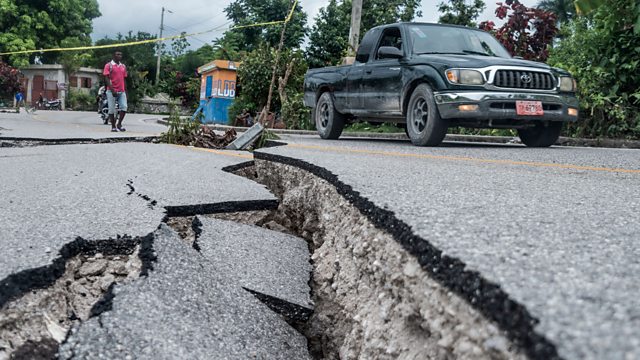Seismic citizen science in Hispaniola
Is there more to come from the Haitian earthquake fault system? Is ‘Blue Hydrogen’ all that green? Have hopes for fusion been re-ignited? And why do some bat babies babble?
The epicentre of the tragic earthquake in Haiti last week was just 100km from that of the even more deadly 2010 one. Unlike then, a network of small cheap seismic detectors run by volunteers is currently monitoring the aftershocks. As Eric Calais says, the suspicion is that this could be the latest in a sequence of quakes, echoing previous clusters over the last few hundred years.
Hydrogen is being much touted as an alternative to natural gas as a source of fuel for homes in a low-carbon world. In particular, “blue” hydrogen – hydrogen made from fossil fuels but with the carbon dioxide being captured at the point of production – is said to be some sort of transitional fuel that could be introduced into current infrastructure with little stress. But Robert Howarth is less optimistic. He is co-author on a paper published last week analysing the net carbon impact of blue hydrogen production. He argues that not only are there hidden greenhouse gas emissions in production, but that in fact burning blue Hydrogen at home could have a worse impact than burning the natural gas from which it is made.
Meanwhile, physicists at the US National Ignition Facility are rumoured to have made a huge stride in the quest for controlled, sustained nuclear fusion. Using a barrage of powerful lasers to heat indirectly a tiny hydrogen isotope target, on the 8th of august, they briefly got 70% of the energy back from one of their runs. It is a huge leap in returns, and tantalisingly suggests some sort of runaway fusion reaction occurred. Around the world, hopes of laser-driven fusion energy generation are soaring, but as an ecstatic Kate Lancaster of the University of York cautions, even if it does represent ignition, we are still a long way from “plug socket efficiency” or net energy gain.
Meanwhile, scientists of the Leibniz Institute evolution and Biodiversity have been eavesdropping on bats in Panama. Human babies babble when they are learning how to talk. It’s been shown before that songbirds do something similar, but according to Ahana Fernandez, it now it seems another mammal joins the babbling ranks – the younglings of the Greater Sac-Winged bat of South America. Ahana tells Roland about her analysis.
(Photo by Reginald Loiussaint/JR/AFP via Getty Images)
Presenter: Roland Pease
Producer: Alex Mansfield
Last on
More episodes
Previous
Broadcasts
- Thu 19 Aug 2021 19:32GMT�鶹�� World Service
- Fri 20 Aug 2021 03:32GMT�鶹�� World Service Australasia, South Asia & East Asia only
- Fri 20 Aug 2021 04:32GMT�鶹�� World Service Americas and the Caribbean
- Fri 20 Aug 2021 08:32GMT�鶹�� World Service
- Fri 20 Aug 2021 12:32GMT�鶹�� World Service Australasia, Online, UK DAB/Freeview, News Internet & Europe and the Middle East only
- Sun 22 Aug 2021 01:32GMT�鶹�� World Service Americas and the Caribbean & News Internet only
Podcast
-
![]()
Science In Action
The �鶹�� brings you all the week's science news.


